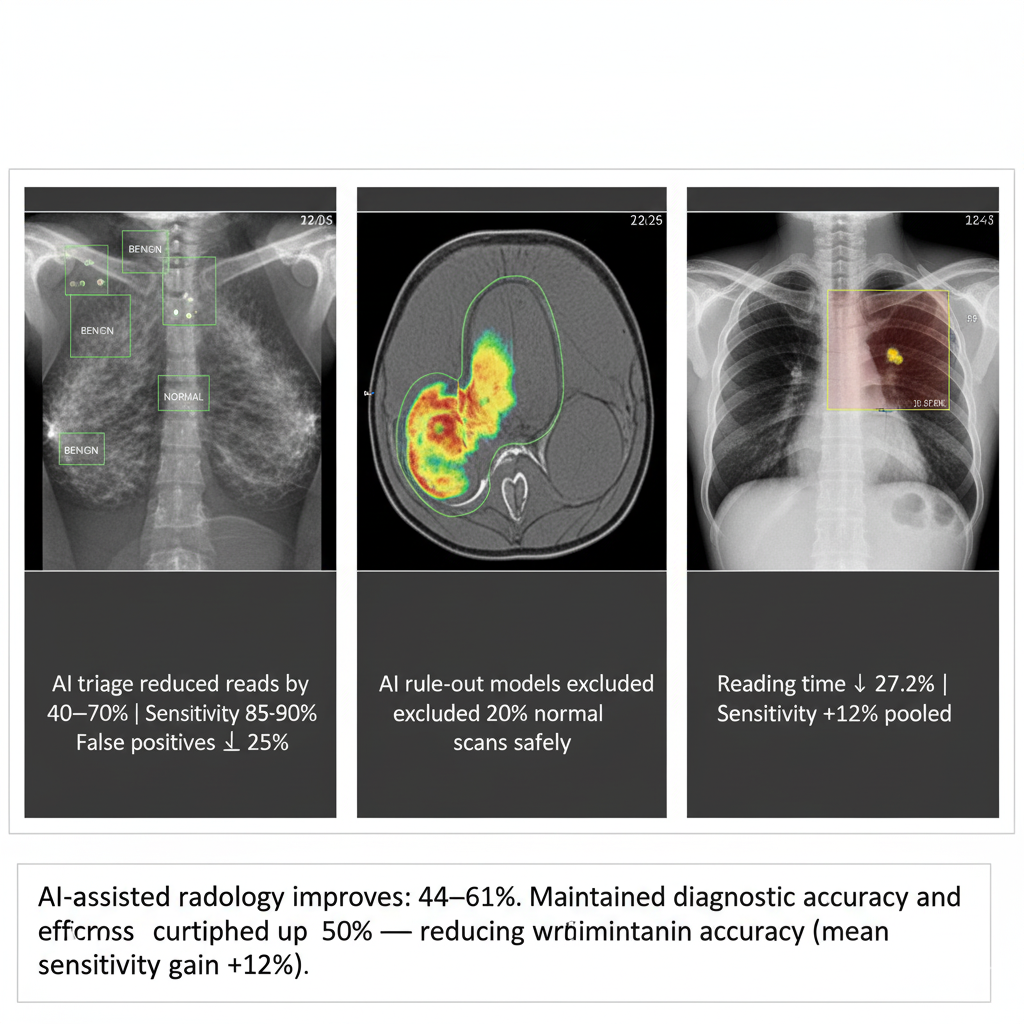Optimizing Radiology Through AI: A New Frontier in Workload Reduction
Ilhan Jirde¹, Omsalama Yousif ²*, Qais Al-Said³, Hadeil Abdelgader⁴
Abstract
BACKGROUND: Rapidly increasing imaging volumes and workforce shortages have placed radiology under mounting strain. Artificial intelligence (AI) solutions ranging from triage algorithms to automated reporting have been proposed to optimize workflow, reduce reading burden, and maintain diagnostic quality.
Objectives: This systematic review aimed to evaluate the quantitative impact of AI on radiologist workload and efficiency, identify the most effective AI applications, and outline implementation challenges.
Methods: A systematic search of PubMed and Google Scholar (2012–2025) identified original studies assessing AI interventions in clinical radiology with measurable workload outcomes. Eligible studies included randomized, cohort, and simulation designs. Twelve studies met inclusion criteria, spanning mammography, tomosynthesis, prostate MRI, ultrafast MRI, and chest radiography. Data were narratively synthesized.
Results:AI integration consistently decreased radiologist workload across modalities. In screening mammography, triage protocols reduced human reads by 40–70% while maintaining non-inferior sensitivity (≈70–90%) and lowering false-positive recalls by up to 25%. Meta-analytic data showed mean 27.2% faster reading times and 44–61% fewer cases requiring radiologist review. AI rule-out models for prostate MRI safely excluded up to 20% of normal scans, and ultrafast breast MRI achieved 15.7% workload and scanner time reduction with 98% sensitivity. Chest X-ray AI assistance improved detection and reduced reading time modestly. Across studies, diagnostic accuracy was preserved or slightly improved (+12% pooled sensitivity).
Conclusion: Artificial intelligence markedly enhances radiology efficiency, particularly in screening workflows, achieving up to 50% workload reduction without loss of diagnostic integrity. Successful deployment depends on threshold calibration, local validation, and workflow integration to ensure safety, trust, and sustainable productivity gains.
Downloads





